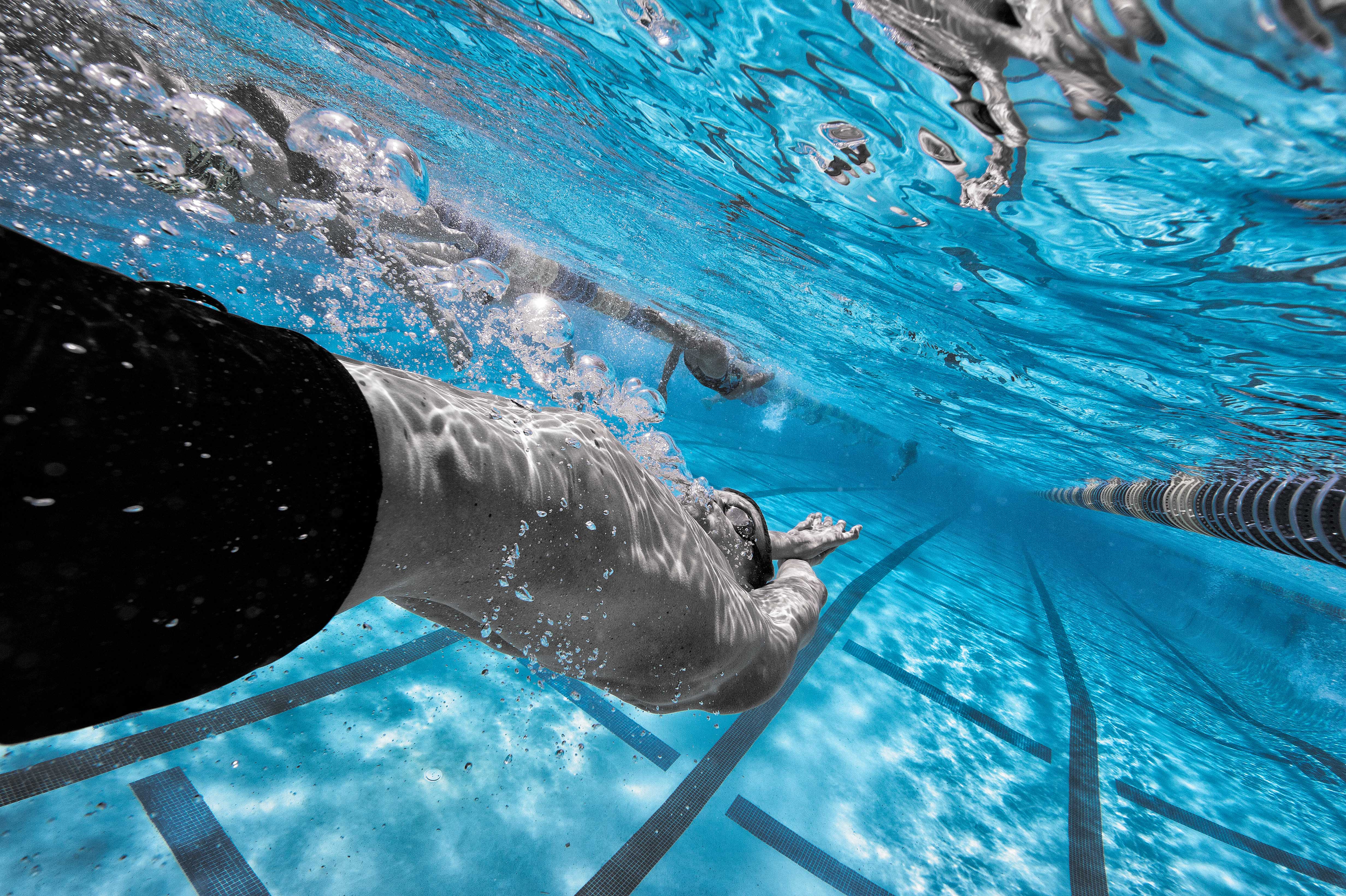The Importance of Core Stability in Swimming
A strong core is a requirement for swimmers looking to increase speed and improve technique. In order for swimmers to minimize drag resistance through the water, the core plays a very important role in keeping the body in a stable streamlined position. Further, core muscles that are not well conditioned can lead to technical flaws and stroke inefficiencies, which could make or break a chance at the podium.
The Need for Core Strength
The core is crucial to support large muscle groups to help power through the water. In order for the body to support great technique, the core needs to be able to simultaneously sustain the propulsive force that is coming from the arms and the legs. Unlike land sports, swimmers have to generate force without using the ground. On land, athletes are able to use the ground to help generate power created from the muscles in the lower extremities and through the kinetic chain of energy, which is then released into whatever action they are engaged in.
As a result of this difference, it is imperative swimmers have strong torsos. Thus, swimmers must include exercises in their training regimens that work abdominal muscles to maintain muscular balance and equal distribution of force throughout the body.
Benefits of a Strong Core
There are many advantages that come with having a strong core both in and out of the pool. Core muscles are responsible for stabilizing the spine and the pelvis which in turn help steady and strengthen the lower extremities. For instance, strengthening core muscles facilitate increased speed and efficiency in the water as improved stability allows swimmers to better leverage larger muscles to help propel them through the water. Often our swimmers want to improve times by focusing on power of their stroke or kick, altogether forgetting about the time they actually spend cutting through the water in the streamline position.
By improving core strength, your athletes will be able to hold their bodies straighter throughout the position, creating less drag and ultimately increasing speed. A stronger core will also greatly improve your athlete’s technique throughout any stroke as the obliques and hip flexors help control the movement of the upper and lower extremities.
Whether launching off the blocks, blasting through a sprint, or settling in for a longer set, improving stability and technique are undoubtedly crucial when cutting time and increasing speed through the water. Therefore, incorporating a variety of core strengthening movements in your program will prove essential when targeting these goals; helping your swimmers shed seconds in the water while also making them better athletes.
Exercises for Core Strength
There are a variety of movements that can impact core strength and it is essential that coaches and athletes find variety in these movements to better build both strength and compliance. Below are five swim-specific core exercises that swimmers should consider including in their training to increase their core strength and optimize performance in the water.
Side V-Ups
Side V-Ups help target lower back muscles, hip flexors and inner abdominal muscles. For a modified version, try Flutter Kicks (below).
Front Bridge Rocker
Front Bridge Rocker focuses on strengthening hip flexors to improve efficiency in your kick.
MB Russian Twists
MB Russian Twists challenge the obliques to help improve stability and suspension during streamline.
Streamline Crunches Flutter Kicks
An alternative to Side V-Ups, these Flutter Kicks will help activate the muscles needed to propel you through the water.
Front Bridge Arm Raise
The Front Bridge Arm Raise will help activate core muscles as they steady the shoulders and arms.
Recap
Increasing core strength will increase stroke efficiency, which will ultimately improve performance in the water. The center of each stroke starts at the core, making it one of the most important muscle groups in the sport. There are many exercises that swimmers can begin to include in their weekly training regimens, the ones listed above are a great start and will be helpful in abdominal strength training.
About the Author

At Bridge, we are all athletes and coaches first. As athletes, our team has experienced everything from riding the pine on JV, to winning NCAA championships, to competing in the Olympic Games. As coaches, we have helped countless athletes reach their full potential, winning everything from age group section championships to Olympic Gold Medals.
Related Posts

The Best Bench Press Variation You’re...
This post is part of our Coaches Corner series with Taylor Rimmer. Taylor is NSCA-CPT, StrongFirst...

Does Powerlifting Harm Heart Health?
A recent study has discovered that a 12-week supervised strength training program (SSTP) may result...
-1.png)
Barefoot Running: Is It For You? |...
Run Free: Consider Less Cushion
Updated October 2020:
With more athletes looking for ways to...


